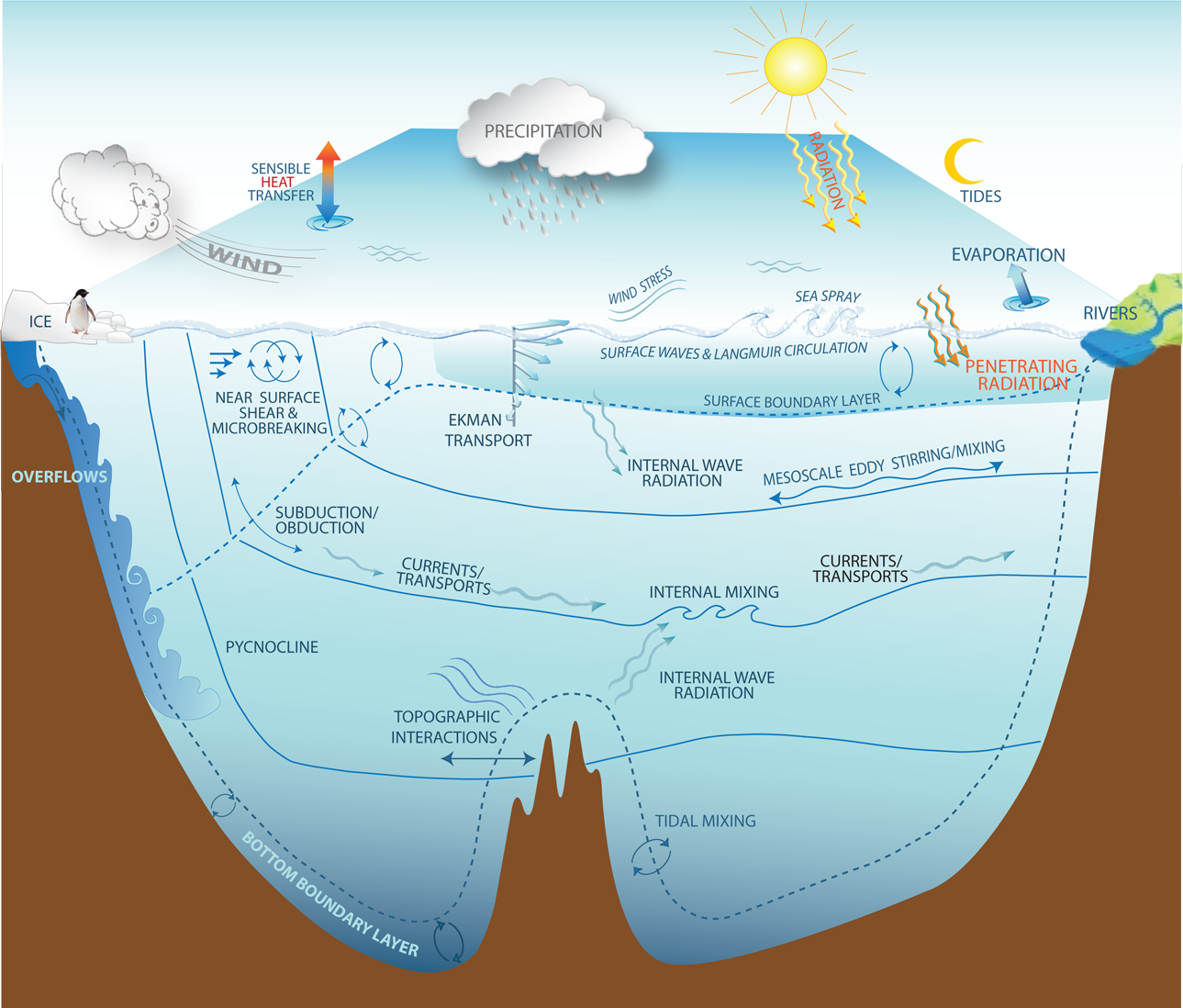Ocean Mixing
The thermodynamic properties of the ocean, such as temperature, salinity, and buoyancy, and dynamic properties, such as momentum, energy, and vorticity, are governed by numerous hydrodynamic processes. These include:
- Turbulent processes, such as diffusion and mixing
- Internal waves and internal tides, wave-wave interactions
- Boundary-layer processes, such as friction and topographic drag
- Buoyancy forcing, heating and cooling by the atmosphere
- Convection, double diffusion, and hydrostatic instability
Large-scale ocean climate, including the meridional overturning circulation, the uptake of anthropogenic carbon dioxide by the ocean, the heat uptake by the ocean, and global biogeochemical cycling, can be impacted by the small-scale fluxes due to these mixing processes. These studies generally focus on energy exchanges between different classes of fluid motion. This includes the transfer of tidal energy that occurs when large-scale tidal flows interact with the topography of the sea-floor to produce waves. The goal is to develop efficient physically-based parameterizations of these processes, using a combination of high resolution simulations which resolve the predominant scales of the mixing, and information from laboratory experiments, theory, and analysis of oceanographic data, including direct measurements of turbulence made during sea-going field programs.

A schematic of the small scale mixing processes in the ocean
Funding Agencies
The National Ocean and Atmospheric Administration, the U.S. Climate Variability and Predictability Program, and the National Science Foundation are funding this research.



Partners/Collaborators
This is a joint project with Scripps Institution of Oceanography, Applied Physics Laboratory - University of Washington, Goddard Earth Sciences Technology and Research, Greenbelt, and Department of Earth and Planetary Sciences - Johns Hopkins University, University of Alaska - Fairbanks, Oregon State University, National Center for Atmospheric Research, Massachusetts Institute of Technology, Program in Atmospheric and Oceanic Sciences - Princeton University, Northwest Research Associates, University of Victoria, Niels Bohr Institute, NOAA - Geophysical Fluids Dynamics Laboratory, Center for Ocean-Atmosphere Prediction Studies - Florida State University, University of Southern Mississippi, Department of Earth and Environmental Sciences, and the University of Michigan.